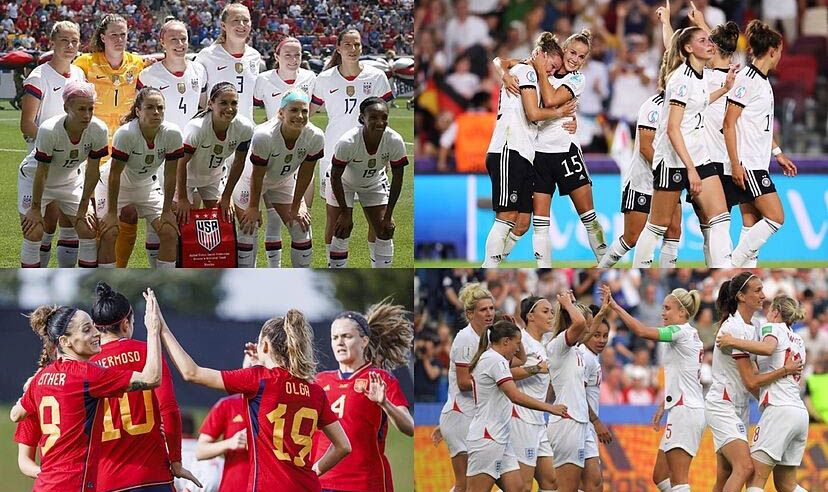
The 2023 Women’s World Cup: A New Era for Women’s Soccer
The 2023 Women’s World Cup will showcase the growth of women’s soccer internationally, from the most experienced players to the youngest.
Until the 2022 Men’s World Cup Final, the 2015 World Cup Finale was the most-watched soccer game in American history. Additionally, the Women’s Champions League 2022 Final at FC Barcelona’s Camp Nou broke attendance records for both men’s and women’s soccer with 91,533 fans.
The 2023 World Cup is the first FIFA Women’s World Cup to be co-hosted by two nations (Australia and New Zealand) and to feature 32 teams. This is a significant increase from the 2011 World Cup with only 16 teams and the 2019 games with 24 teams. Of these 32 teams, countries such as Haiti, Morocco, the Philippines, Vietnam and Zambia are competing for the first time. The U.S. Soccer Federations’ elimination of the pay gap between the men’s and women’s teams marks a historic move towards equality, with England, Canada and Brazil taking similar steps.
These significant changes foreshadow the precedence of this year’s World Cup, which will highlight the best of what the women’s game has to offer and its bright future.
The FIFA Women’s World Cup 2023 is guaranteed to be competitive, with talented young new players and elite returning players. Both Canada and Nigeria are anchored by two experienced 40-year-olds: Christine Sinclair and Onome Ebi. Both players are heading into their sixth World Cup, and Sinclair will likely become the first player (male or female) to score at six World Cups. Additionally, Spain’s Alexia Putellas will return to this year’s competition after winning four major championships, two Ballon D’Ors, and multiple Player of the Year awards. Japan’s first premier goalkeeper Ayaka Yamashita recently conceded the fewest goals in her league and was named the league’s MVP in 2022, becoming the first goalkeeper to receive this honour.
However, the new players with unprecedented talent also make this World Cup one to watch. The American side poses new threats with the NWSL MVP and US Soccer Player of the Year Sophia Smith. Alongside Smith on the attack is the youngest drafted player in NWSL history, Trinity Rodman. However, the Netherlands also has new skilled players revolutionizing the game. Nineteen-year-old Esmee Brugts scored the winning goal in the Dutch 1-0 win over Iceland in the World Cup qualifier. New to the fierce Brazilian side is 23-year-old Kerolin, a starting midfielder and frequent goal-scorer for the North Carolina Courage.
Despite the experienced returning talent, this year’s World Cup is also missing many key players due to injury, which gives many players new opportunities to step up. On the American side, major players such as Becky Sauerbrunn, Mallory Swanson and Catarina Macario will be absent due to injury. England is also facing similar challenges with the loss of Beth Mead, their star striker, along with Fren Kirby and captain Leah Williamson. Canada and the Netherlands must also recover from the loss of key players like Janine Beckie and Vivianne Miedema from their respective rosters.
The United States is a tournament favourite with four previous championship wins. However, Canada also arrives in Australia and New Zealand with an Olympic gold medal. Although England is the current European champion, there is a chance this could change with fierce rivals like Sweden, Spain, France, the Netherlands and Germany eager for a championship win.
With twenty-nine million women and young girls playing soccer worldwide, this World Cup is guaranteed to reflect this increase in passion and talent. It is an opportunity to inspire girls from all over the world to pick up a soccer ball and pursue the bright future ahead.
New Zealand vs Norway will kick off the World Cup on July 20th at 3:00 a.m. ET. Watch the game via CBC, TSN, SportsNet, or at your favourite sports bar.
For the full FIFA Women’s World Cup 2023 schedule, visit www.fifa.com.







